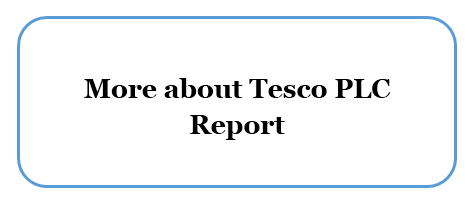Tesco Marketing Mix
The term marketing mix “is used to describe the tools that the marketer uses to influence demand”[1]. Traditionally, marketing mix contained four elements – product, price, place, and promotion, and additional elements that have added to the concept of marketing mix consist of people, process and physical evidence.
Tesco marketing mix is manipulated by the marketing and the senior management to a great extent in order to offer competitive benefits to target customer segment with positive effects on the bottom line.
Product. Tesco offers a comprehensive range of products. Specifically, along with food and grocery products the following product categories can be purchased from the supermarket chain:
- Clothing & jewelry
- Technology & gaming
- Health & beauty
- Home electrical
- Entertainment & books
- Home appliances
- Baby & toddler
- Garden
- Toys
- DIY & Car accessories
The range of product categories sold in Tesco stores depend on the type of store with Express stores having the least variety of products and Extra stores offering the widest choice. Moreover, Tesco Bank offers a range of popular banking products such as mortgages, credit cards, personal loans and savings.
Place. Place element of the marketing mix relates to locations where customers purchase products and services and the distribution of products to those locations. Tesco utilises two channels to sell its products and services: online and offline.
As it is illustrated in figure below, despite the global financial and economic crisis of 2007 – 2009 and other challenges faced by the company, the number of Tesco stores have been consistently increasing for the last eight years to reach 7817 stores in 11 countries by the end of 2015. More than two-thirds of total Tesco sales are made in the UK.[2] Stores are operated in the following format:
- Metro
- Express
- Extra
- Superstore
Changes in the number of Tesco stores worldwide[3]
Online sales channel of the supermarket chain is titled as Tesco Direct and it is based on the official website of the company – www.tesco.com. It is important to note that the popularity of online sales channel compared to traditional offline sales channel has been consistently increasing for the last few years. During the financial year of 2014/15 Tesco’s online grocery business grew ahead of the market at 20 per cent, despite the fact that the company made the pre-tax loss of GBP 6.37 billion during the same period.[4]
Price. Tesco pricing strategy can be described as cost leadership. The pricing strategy is developed according to its business strategy and the pricing strategy contributes to its competitive advantage. Specifically, Tesco pricing strategy is based on its marketing message of ‘Every Little Helps’. Tesco management aims to reduce the cost of purchase and operational costs through economies of scale and a set of other measures in order to pass the cost advantage to customer as the main brand value. The company also uses economy pricing, psychological pricing, product line pricing and geographic pricing strategies…
Tesco PLC Report contains a detailed discussion of Tesco marketing mix along with a detailed analysis of Tesco’s marketing strategy. The report also illustrates the application of the major analytical strategic frameworks in business studies such as SWOT, PESTEL, Porter’s Five Forces, Value Chain analysis and McKinsey 7S Model on Tesco. Moreover, the report contains analysis of Tesco’s leadership and organizational structure and discusses the issues of corporate social responsibility.
[1] Bowie, D. & Buttle, F. (2011) “Hospitality Marketing” 2nd edition, CRC Press
[2] Annual Report and Financial Statements (2015) Tesco Plc.
[3] Statista (2016) Available at: http://www.statista.com/statistics/238667/tesco-plc-number-of-outlets-worldwide/
[4] McDonald, C. (2015) “Tesco’s online sales increase despite £6.37bn loss” Computer Weekly, Available at: http://www.computerweekly.com/news/4500244817/Increase-in-Tescos-online-sales-mitigates-yearly-637m-loss


